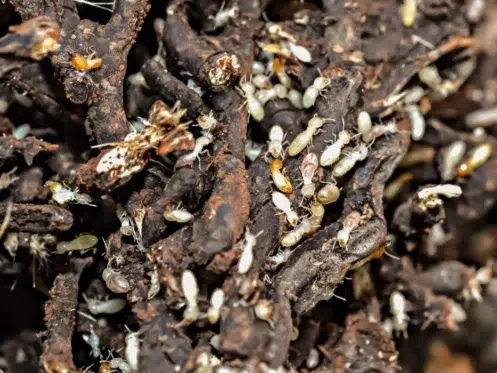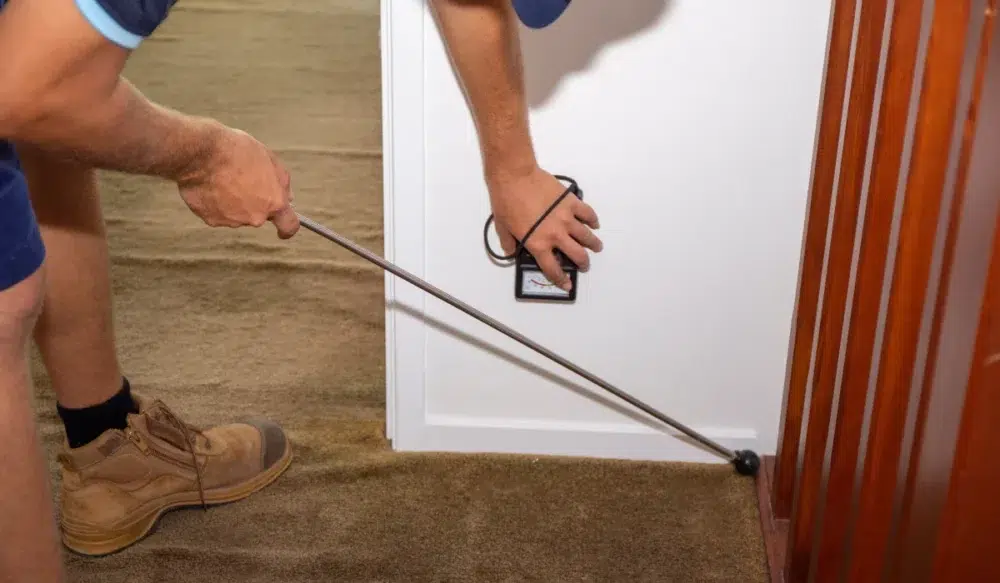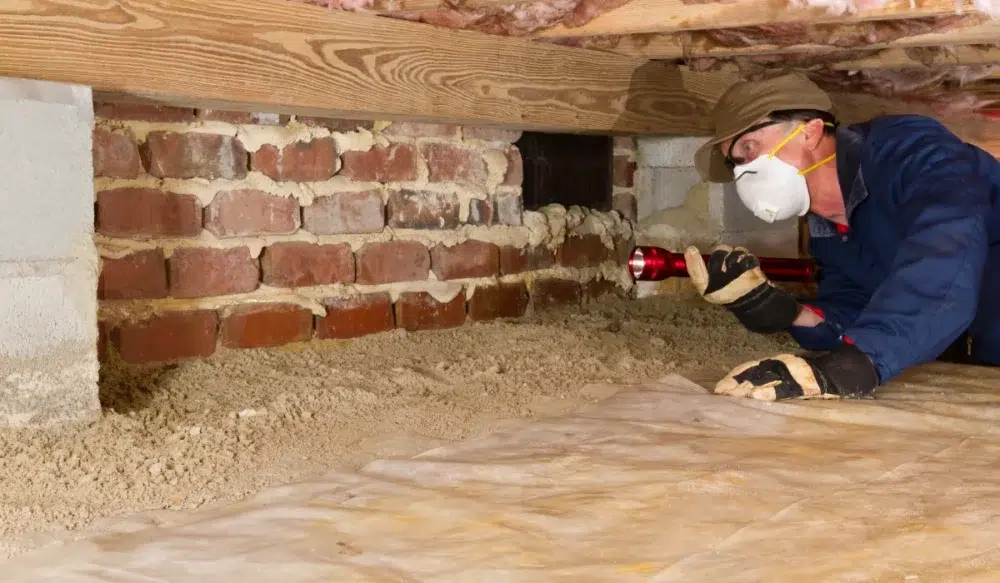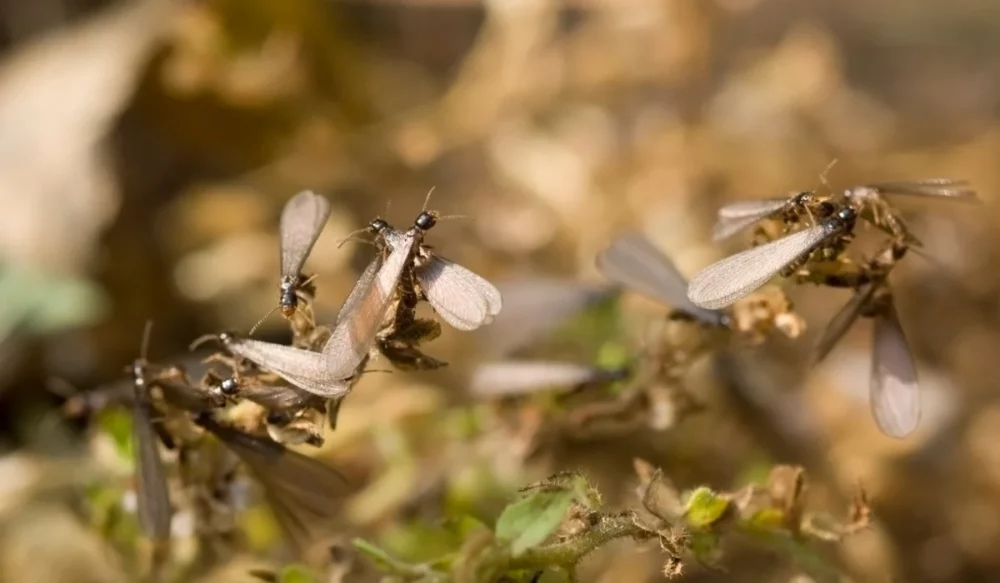If you’re a homeowner in Arizona dealing with a termite problem, you might be wondering if tent fumigation is the best fix. It looks intense. Your house gets covered in tarps, and gas is pumped in to kill termites. But when it comes to subterranean termites, this method just isn’t the right fit.
Here’s what you need to know about this termite treatment.
Key Takeaways
- Fumigation is not a good solution for subterranean termites because it cannot reach their colonies underground.
- Mud tubes built by subterranean termites stay intact after fumigation and let the termites return easily.
- No long-term protection is provided by fumigation because it does not block future infestations or new colonies.
- Effective treatment requires using bait stations, soil treatments, and expert pest control instead of fumigation.
Does Fumigation Work on Subterranean Termites?
No, fumigation doesn’t work well against subterranean termites.
While it’s helpful for types of termites, such as drywood termites, it won’t get rid of the underground termite colonies where subterranean termites live and breed. That means the root of the termite infestation stays in place, and the damage keeps going.
Let’s take a closer look at why that happens with this treatment method.
The Termite Colony Is Underground
Subterranean termites build their colonies deep in the soil. They don’t live in your walls. They travel from their nest underground to your house to find a food source, usually wooden structures. The fumigation process fills the air in your home, but it doesn’t reach the soil.
So, while some termites inside your house may die, the main colony is still alive and active.
Termite Behavior Can Affect Fumigation Results
Subterranean termites respond to danger by moving away from it.
During fumigation, they may retreat deeper into the soil where the gas cannot reach them. Because their colonies are built underground and constantly shifting, these termites can avoid exposure and survive the treatment.
Once the home is unsealed, they may return through existing mud tubes and continue feeding on the structure.
Mud Tubes Stay in Place
Subterranean termites use mud tubes, also called mud tunnels, to move safely between the ground and your house. These tubes are one of the first signs of termite activity. But after tent fumigation, those tubes are still there.
Since the gas doesn’t break them down or seal off entry points, they can come right back.
No Long-Term Protection
Here’s the biggest issue: fumigation doesn’t give your home any lasting protection. It kills what’s there at the time, but doesn’t keep them from coming back.
Unlike soil treatment or a termite baiting system, there’s no barrier to stop future infestations. Without a real preventative measure from pest control services, swarmers can move in and start new colonies.
It Doesn’t Fit Most Treatment Plans
If you ask a pest control company how to handle subterranean termite infestations, they’ll usually recommend trenching with liquid treatments or installing bait stations.
These are long-term solutions that target the root of the issue, something fumigation just can’t do.
Fumigation vs. Soil Treatment & Bait Stations
| Treatment Method | Targets Underground Colonies? | Long-Term Protection? | Best For |
|---|---|---|---|
| Fumigation | ❌ No | ❌ No | Drywood termites only |
| Soil Treatment | ✅ Yes | ✅ Yes | Subterranean termites |
| Bait Stations | ✅ Yes | ✅ Yes | Subterranean termites (long-term) |
DIY Termite Fumigation Isn’t Enough
Trying a DIY approach may seem easier or cheaper, but it won’t solve the problem.
Spot treatments might kill a few pests on the surface, but they don’t go deep enough to reach the colony. Over time, this leads to more termite damage, and in many cases, serious structural damage.
If you’re not sure what kind of termite you’re dealing with, it’s best to schedule a termite inspection. A trained tech can tell you whether you have drywood termites or subterranean termites and build the right treatment plan from there.
The Right Way to Get Rid of Subterranean Termites
Fumigation isn’t the answer for a subterranean termite infestation, but Green Home Pest Control can help. We use proven termite control methods like targeted pest management strategies to eliminate the colony and stop the damage at the source.
Every service starts with a free inspection so we can assess the problem and recommend an effective treatment plan. Whether you’re seeing droppings, mud tubes, or other signs of termite activity, our goal is the same: real eradication and long-term protection.
We stand behind our work with a strong warranty because homeowners deserve peace of mind, not guesswork.
Call us today and get the right solution, not a temporary fix.




